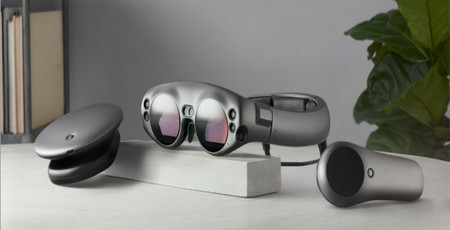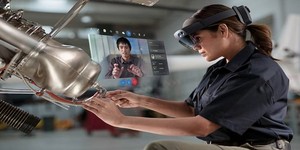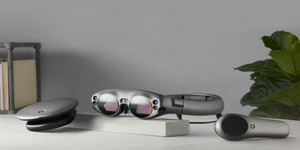Magic Leap unveils One augmented reality headset
December 21, 2017 | 11:31
Companies: #magic-leap #microsoft

Augmented reality specialist Magic Leap has finally unveiled its AR headset, the Magic Leap One, ahead of a developer-centric limited launch some time in 2018.
Magic Leap - not to be confused with Leap Motion, creator of VR compatible finger-tracking technology - was founded in 2010 by former surgical robot expert Rony Abovitz but despite raising over a billion dollars in funding and being claimed by Forbes to be worth $4.5 billion, the company has done little publicly since. A rash of demonstration videos showcasing its upcoming augmented reality platform were picked apart amidst claims of fakery, but the company is now addressing its critics with launch plans - for, admittedly, a device which has still to be tested publicly.
The Magic Leap One, the company's announcement late last night explains, comprises three main devices: the Lightwear headset, designed to mimic a pair of goggles; the belt-worn Lightpack battery and processing pack; and a hand-held controller with which the user can control the system. Like Microsoft's rival HoloLens, the Magic Leap One isn't a virtual reality headset; instead, it overlays computer-generated imagery onto the real world as viewed through the semi-transparent display lenses - which, the company promises, can be ground with a prescription for those who wear traditional glasses.
Sadly, Magic Leap's big reveal leaves questions unanswered. The company has pledged to launch a developer version of the Magic Leap One, dubbed the Creator Edition, in 2018, but has not addressed the issue of pricing - an area in which Microsoft's high-priced HoloLens struggles. Specifications for the hardware are also not available, and the company's promotional imagery is at best heavily touched up and at worse an outright render.
Scant more information on the Magic Leap One is available at the official website.

MSI MPG Velox 100R Chassis Review
October 14 2021 | 15:04








Want to comment? Please log in.